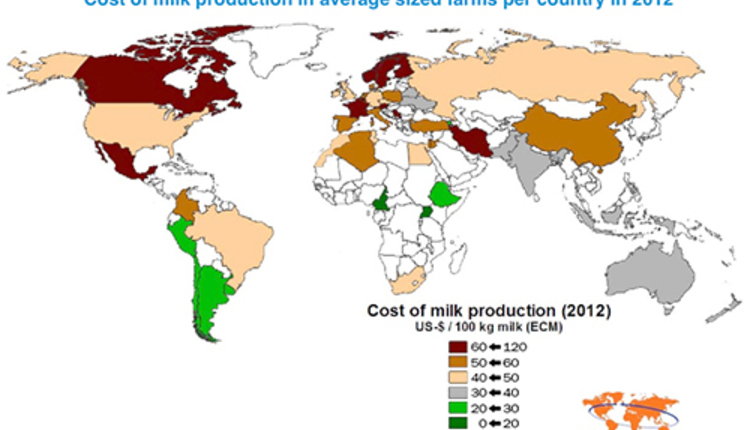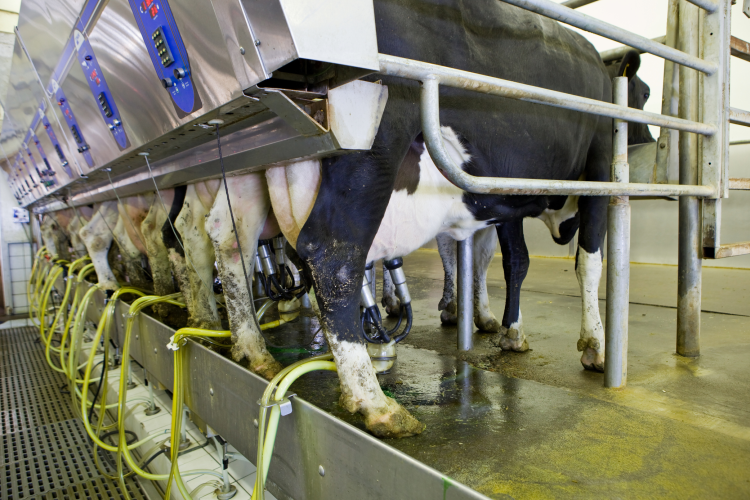
Low-cost dairy produce -
Share on Facebook. Email This Link. Share on X formerly Twitter. Share on Pinterest. Share on LinkedIn. Most Read. Idaho Flower Pot is a unique Air BNB experience open now in Burley.
UPDATE: Star man arrested in Jerome County for alleged sexual exploitation of a child. Suspect connected to the death of William Eakin sparks concerns regarding compliance with the court. Fish and Game to restock area ponds for fishing! Latest News. Hammond, Nellie Perez. Local bars are ready to celebrate and watch the Super Bowl.
Sanon Hadja Oumou, Neya B. Samuel, … Bougouma M. Deniz Sarica, Vecdi Demircan, … Hayati Koknaroglu. As a result, more and more livestock producers in Burkina Faso increase milk production to supply the domestic market Sib et al.
This raises the issue of productivity and sustainability of those emerging dairy operations. For a long time, livestock producers in Burkina Faso seemed to have steered clear of the milk market, as shown by the dairy farmer typologies of Hamadou et al.
These typologies revealed two groups of livestock producers based on the degrees of production intensification and integration to the market. According to these studies, the first and overwhelmingly largest group These holdings were characterised by the breeding of zebu cows, with pasture as the main feed resource, a very low milk yield per heifer, and limited marketing of the milk produced.
The second group, much smaller 1. For them, milk production was the main objective. Consequently, in order to secure their activity and increase production, they were pursuing a land acquisition strategy and developing more intensive dairy farming practices i.
use of feed concentrates, exotic local breeds and sometimes artificial insemination. Recent studies by Sib et al. The primary objective of this study is to characterise the different dairy systems more accurately than in previous studies by providing the most accurate quantifying elements possible.
The survey was based on a sample of 60 milk-producing farms representative of the range of types highlighted by previous studies Hamadou et al. Data was collected through a once-through survey questionnaire, applied to each farm manager considering 1 year of production from February to January , focusing on the dairy operation during the hot dry season from February to May , then during the rainy season from June to October and then during the cold dry season from November to January A principal component analysis PCA was applied to twenty informed and calculated variables, followed by an ascending hierarchical classification AHC in order to distinguish uniform classes.
Those twenty variables included:. The PCA and the AHC brought out three classes of dairy systems Table 1 ; Fig. Pastoralists have large cattle herds 49 TLU. Their dairy operation is largely dominated by Sudanese Fulani zebus 16 zebus and only two crossbred milking cows: zebu x Holstein, or zebu x Montbéliarde, or zebu x Brune des Alpes depending of the farms.
On average, they milk 10 milking cows per day. They make extensive use of grazing native grasslands ingested estimated at 4.
Pastoralists provide very little fodder and feed rations 2. They cultivate small areas 3. Faeces recycling is low. Agropastoralists have smaller cattle herds 17 TLU. On average, they milk 7 cows per day, mostly Sudanese Fulani zebus 7 zebus and 1 crossbred: zebu x Holstein, or zebu x Montbéliarde, or zebu x Brune des Alpes.
They use pasture to feed their milking cows, but less intensely than pastoralists pasture ingested on native grasslands was estimated at 3. However, they provide larger fodder and feed rations, at 7.
Their cultivated area is smaller 1. They deliver most of their milk to a dairy. Their cattle herds are of medium size 21 TLU. They milk an average of 17 milking cows per day. Their dairy operation consists mainly of Sudanese Fulani zebu crossed by artificial insemination with exotic dairy breeds Holstein, Brune des Alpes or Montbéliarde or Tarentaise; 14 crossbred cows and 3 zebus.
They are less reliant on grazing pasture ingested on native grasslands is estimated at 1. They provide similar fodder rations to those of agropastoralists, but larger than those of pastoralists fodder ingested estimated at 5.
They make greater use of feed concentrates cottonseed meal or corn bran than the other classes feed ingested estimated at 5. Some farmers provide excessive amounts of concentrates.
Their cultivated area is similar to that of pastoralists 3. It also shows that women are sadly being excluded from the income generated from milk as dairy activity becomes more important in the household.
These four points serve as a framework for our discussion aimed at analysing this ongoing transition from an efficiency and sustainability perspective.
This is because dairy systems mostly involve local zebus Sudanese Fulani zebus not selected for their dairy output. In West Africa and especially in Burkina Faso Morin et al. These practices can sometimes have limitations in a farming environment when they are not properly managed risk of inbreeding.
They also raise serious animal welfare issues when it comes to breeds ill-suited to tropical heat Ageeb and Hayes ; Kahi et al. The AI of local zebu Sudanese Fulani with exotic dairy breeds Montbéliarde, Holstein, Brune des Alpes, Tarentaise increase quickly milk production, which is appreciated by dairy farmers.
The role of pasture in feed rations declines as milk becomes more economically important to the holding, unlike fodder and feed concentrates Table 1. For instance, among market-oriented dairy farmers, grazing is significantly reduced in comparison to pastoralists and agropastoralists but nevertheless remains an important part of the ration.
In both western and eastern Africa, reduced grazing coupled with a stronger commitment to milk production and trade is a general trend resulting in the adoption of stalling Bebe et al.
In both regions, fodder mostly consists of crop residues collected from the field and stored. Unlike East Africa, silage and fodder crops are still in their infancy in West Africa Njarui et al.
After genetics, feed concentrates are very widely used by producers as a way of increasing production. In the semi-arid zones of Kenya, Njarui et al. In Burkina Faso, market-oriented dairy farmers tend to provide feed in abundance to the milking cows 5.
However, such excessive use is neither efficient nor without risks acidosis. The study shows that the increase in cultivated fodder mainly cowpea and velvet bean hay or silage of forage sorghum in this case study and possibly grass forages such as Brachiaria sp.
or shrub fodder such as Leucaena sp. or Albizia sp. This leads to greater self-sufficiency in fodder and manure for dairy farmers, more efficient use of resources and preservation of soil fertility, i.
improved sustainability of the holding. This can partly be explained by strong land pressure in peri-urban areas, where dairy farmers who deliver to dairies are established. In the Highlands of Kenya, Udo et al. Women are found to be excluded from handling milk-related money when this activity becomes economically important in the household Table 1.
Among the Fulani, income from milk goes exclusively to women. However, the situation seems to change once the decision is made to sell the milk to a dairy. This trend is not specific to Burkina Faso and West Africa.
In East Africa, Herego and Umuzigambeho showed that in milk value chains, women tended to be more focused on home-based production and processing. Beyond production, men predominate in the milk value chain as milk dealers, animal healthcare agents, AI service providers and extension staff.
Curbing overproduction is crucial as current state and federal dairy policies are driving family-scale farms to extinction while fueling the climate crisis, according to the FWW report, Economic Cost of Food Monopolies: The Dirty Dairy Racket.
Consolidation in the US dairy industry has occurred at a faster pace than in every other agricultural sector apart from hog and egg production. Larger farms are less likely to graze their cattle, instead relying on purchased feed — the single largest source of greenhouse gases from industrialised agriculture.
In addition, factory farms store manure in liquid form which encourages the release of methane — unlike field cattle whose manure decomposes with minimal emissions. Livestock — through cattle burps, manure management and the cultivation of feed crops — is responsible for nearly a third of the global manmade emissions.
In recent years, as scientists have warned about the oversized role played by industrial farming in global heating, agribusinesses including dairy have looked towards unproven industry-led fixes like carbon offset markets and feed additives to lower the methane content in cow burps, rather than addressing the main problem, which is factory farming large herds.
Farmers have struggled to break even due to production costs rising faster than milk prices — which were slightly lower in compared with This is partly due to a major shift in US dairy policy away from price stabilization achieved through minimum price guarantees and buying and storing excess milk that would be donated or resold to manage oversupply, to one that encourages production and expanding export markets.
The policy shift — which includes promotion of dairy products in developing countries — helped the US become one of the largest dairy exporters in the world.
Low--cost year farm prices Discounted bread online approaching their lowest totals ever. But decreased demand has Low-vost this a tough summer for Try out for free and has prpduce many of Try out for free to dip into equity to stay afloat. Unfortunately, with dairy being such a global market there is not much that can be done except wait for the demand to go back up, something that can impact more than just farmers. Be sure to keep in mind that the prices being referred are farm prices, not what you would see in the supermarket. Skip to content. by John J. Production is economically Discount beverage deals when goods daity produced at Dxiry cost. Various costs of producing a hundredweight Cwt. of milk help evaluate economic efficiency. The following measures with definitions are used here Cornell University. Dairy Farm Business Summary DFBS Program. Charles H.
die sehr interessante Phrase
Und Sie haben selbst verstanden?
Ihre Phrase ist sehr gut